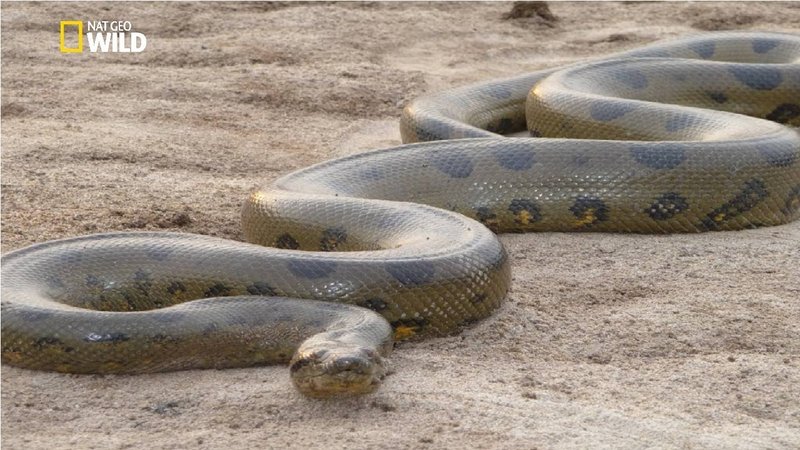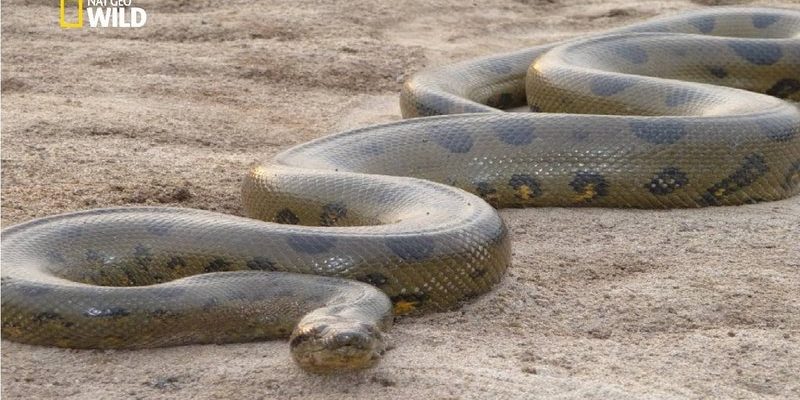
Identifying a green anaconda in the wild can be thrilling, but it also requires a keen eye and some knowledge about the snake’s characteristics and habitat. Let’s dive into how you can recognize a green anaconda if you encounter one in the wild. By the end, you’ll know exactly what to look for.
Understanding the Habitat of the Green Anaconda
Before jumping into identification tips, it’s important to understand where green anacondas like to call home. These snakes thrive in **swamps, marshes, and slow-moving streams** throughout the Amazon Basin and surrounding regions. Think of them as the ultimate stealthy hunters, slinking through the waters and dense vegetation.
Green anacondas prefer areas that are **wet and humid**, which makes sense given their need for water. Often, you’ll find them lurking in **shallow waters** or basking on riverbanks, soaking up the sun. Their habitat is not only key to their survival but also a big clue in spotting one of these magnificent reptiles. When looking for anacondas, try searching near water sources, where they can easily hunt for prey such as fish, birds, and even capybaras.
Physical Characteristics of a Green Anaconda
Now, let’s talk about what makes the green anaconda stand out. These snakes can grow to impressive lengths, often reaching **up to 20 feet** long, though some reports claim even larger sizes. Their size can be daunting, but it also gives you clues for identification.
The coloration of a green anaconda is typically a **dark green** or **olive-brown**, with distinct black or dark brown splotches along their bodies. This coloration helps them camouflage in the murky waters of their habitat. If you spot a large snake with these shades, there’s a good chance you’re looking at a green anaconda. Their belly is usually a lighter yellow or cream color, which can be seen when they’re on the move.
Behavioral Traits to Observe
Observing the behavior of a green anaconda can also help confirm what you’re seeing. Unlike many snakes that are quick to flee, anacondas are more laid-back and tend to stay near water, making them a bit easier to spot if you know what to look for.
You might notice them swimming slowly with only the top of their head above water, or they might be lying in wait, coiled up along the shore. Sometimes, they can be spotted basking under the sun, which is a perfect opportunity to see their amazing color patterns up close. Always keep a safe distance and respect their space, as they can be unpredictable if they feel threatened.
Identifying Young Green Anacondas
It’s also essential to know that young green anacondas look quite different from adults. Baby anacondas are usually around **2 feet long** at birth and have the same striking green coloration with black markings. These young snakes often rely on their ability to blend into their surroundings, which makes identifying them a bit more challenging.
If you happen to spot a smaller, bright-colored serpent that matches this description, you could very well be looking at a juvenile green anaconda. They often stay hidden among the tall grasses and dense brush, so keep your eyes peeled if you find yourself in their territory.
Common Misidentifications
When out in the wild, it’s easy to confuse a green anaconda for other snakes, especially because there are several large snakes in the same regions. For instance, you might mistake them for a **yellow anaconda** or even a **boa constrictor**.
The yellow anaconda is smaller, with a more yellowish hue, while boa constrictors have a different pattern and do not typically inhabit the same wet areas. To avoid confusion, pay attention to size and color pattern: green anacondas are consistently larger and carry a unique camouflage.
Tools and Techniques for Spotting Anacondas
If you’re serious about spotting a green anaconda, having the right tools can make a difference. Binoculars are invaluable for observing these snakes from a distance without disturbing them. Look for them near water bodies, particularly during early mornings or late afternoons when they’re most active.
Another useful technique is to listen. The jungle is full of sounds, but if you hear splashing or rustling in the water, it might be a sign of an anaconda moving about. Always approach with caution, as they can be difficult to see when they’re submerged.
Respecting Wildlife and Safety Tips
As exciting as it is to spot a green anaconda, safety should always come first. Keep a safe distance and avoid startling the snake. Remember, they’re wild animals and can react unpredictably if they feel cornered. Always follow ethical wildlife viewing practices—this means not interfering with their natural behavior or habitat.
When exploring their environment, wear appropriate clothing and footwear to protect yourself from possible encounters with other wildlife. And while photographing these magnificent creatures is tempting, respect their space and never try to handle them.
In conclusion, spotting a green anaconda in the wild can be an incredible experience if you know what to look for. By understanding their habitat, physical characteristics, behavior, and the right techniques for spotting them, you’ll be well on your way to safely identifying one of nature’s most impressive reptiles. So, grab your binoculars and go explore—who knows what wonders you might discover in the wild!

